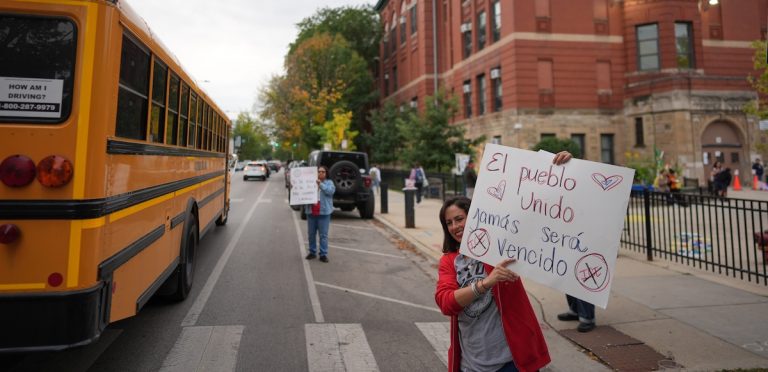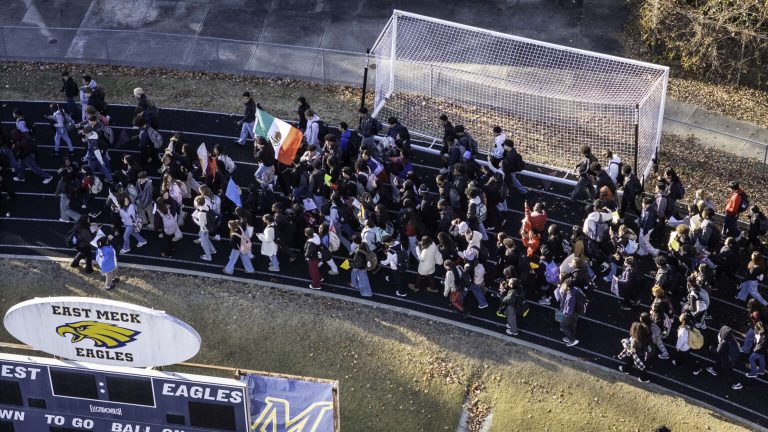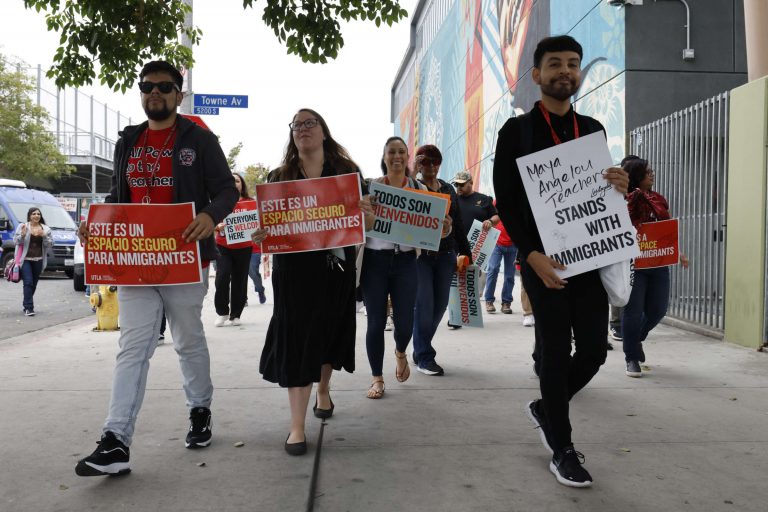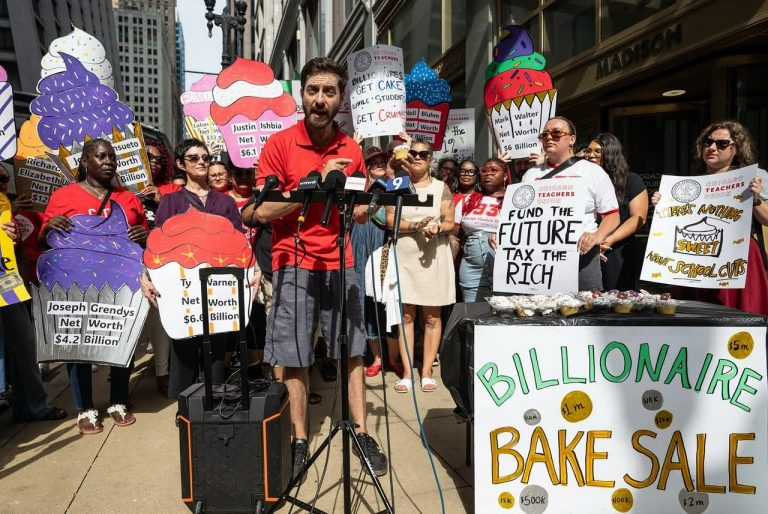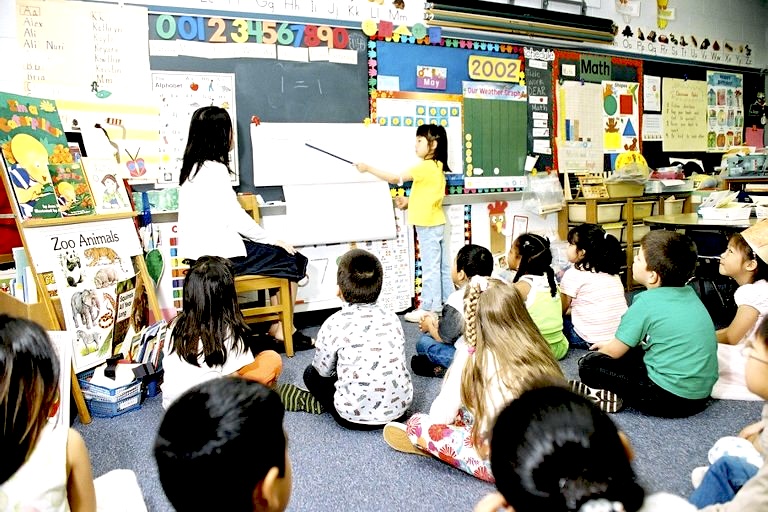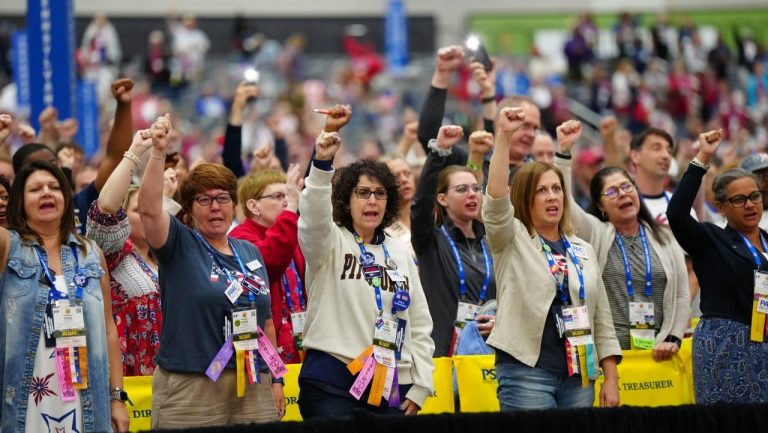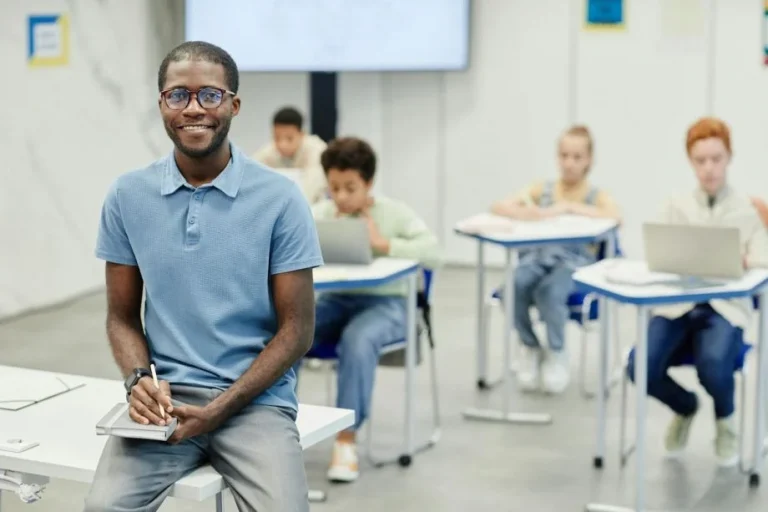ICE Raids Turn Schools Into Battlegrounds To Defend Students
Educator Carolyn Brown was meeting with school counselors when she got the call: ICE agents were out front. By the time she got out of the building, ICE had abducted a woman and her 17-year-old daughter, an American citizen.
Brown, a coordinator of the International Baccalaureate program at Thomas Kelly College Prep, is also part of the rapid-response team for the school, in a Mexican enclave in Chicago’s Little Village neighborhood.
The ICE agents were gone, for the moment. But in the stores across the street, people were too frightened to venture out.

